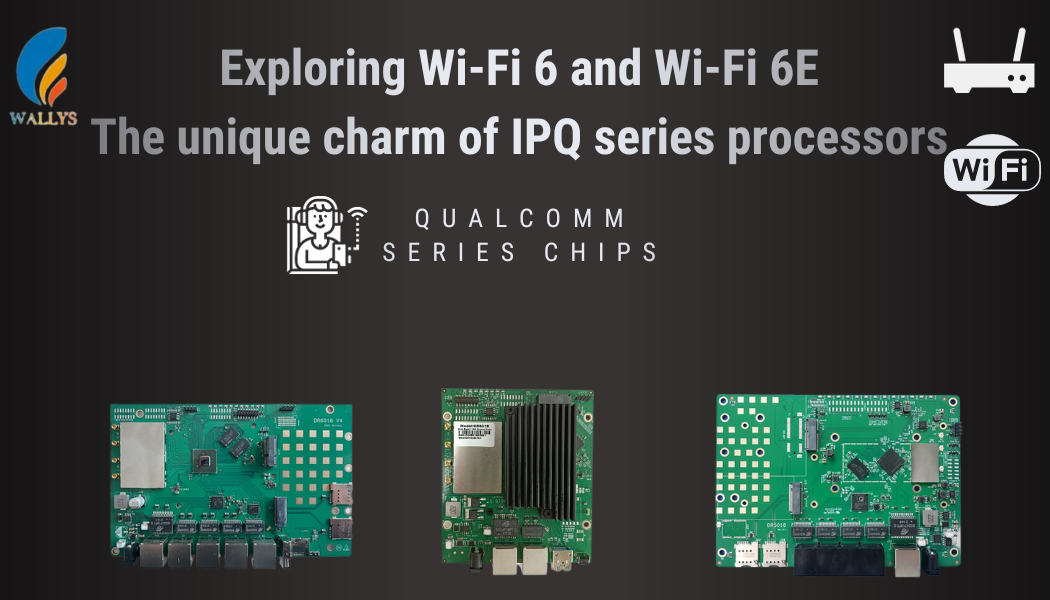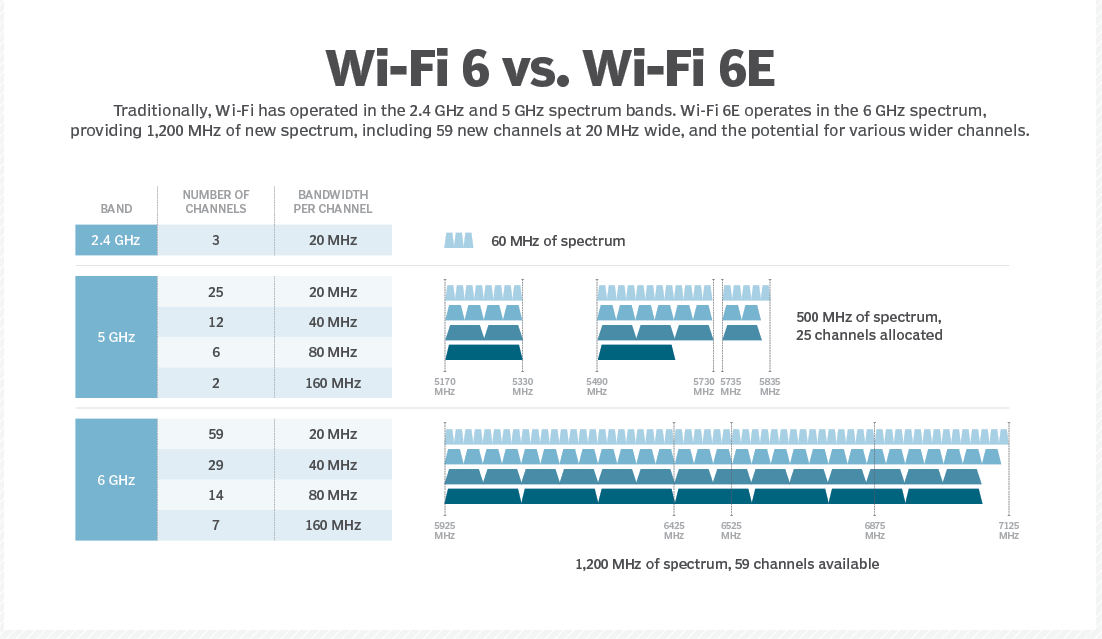Wi-Fi 6 vs. Wi-Fi 6E: The differences between IPQ6018, IPQ6010 and IPQ5018

With the vigorous development of Wi-Fi technology, each new generation of new technologies brings us more powerful performance and richer functions. Today's much-anticipated Wi-Fi 6 (802.11ax) and Wi-Fi 6E are leading a new trend in wireless connections. In this fascinating technical article, we’ll dig deeper into what’s unique between Wi-Fi 6 and Wi-Fi 6E, and where the IPQ family of processors leads the way.
Wi-Fi 6 (802.11ax)
Soaring speed and efficiency: Wi-Fi 6 introduces a series of key upgrades compared to the previous generation Wi-Fi 5 (802.11ac). By introducing technologies such as Orthogonal Frequency Division Multiple Access (OFDMA) and Basic Service Set (BSS) coloring, its data transfer rate has leapt forward, with peak speeds as high as 9.6 Gbps. These technologies enable devices to connect to more devices simultaneously while maintaining high-speed data transfer.
Huge increase in capacity: One of the most eye-catching features of Wi-Fi 6 is its greater device processing power. Using multi-user, multi-input, multi-output (MU-MIMO) technology, data can be sent to multiple devices at the same time, effectively reducing network congestion and improving overall performance.
Upgraded coverage: Wi-Fi 6 introduces Target Wake Time (TWT) scheduling, which allows devices to intelligently negotiate when and how often to wake up to transmit data. This innovation not only reduces device power consumption, but also significantly expands the coverage of Wi-Fi connections.
Comprehensive security upgrade: Wi-Fi 6 devices must use the latest WPA3 encryption protocol to provide stronger security protection and effectively resist security threats such as brute force cracking. Opportunistic Wireless Encryption (OWE) functionality further enhances privacy protection on open networks.
Backwards Compatibility: Wi-Fi 6 routers and access points are designed to be backwards compatible with Wi-Fi 5 and earlier devices, ensuring older devices can still connect to the network, albeit at slightly reduced speeds.

Wi-Fi 6E (802.11ax Extended)
Frequency band breakthrough: The most significant difference between Wi-Fi 6 and Wi-Fi 6E is the frequency band. Wi-Fi 6 works in the 2.4 GHz and 5 GHz frequency bands, while Wi-Fi 6E expands to the 6 GHz frequency band. This additional spectrum gives it more channels and less interference, making it more ideal in high-density environments.
Significant increase in channel width: Wi-Fi 6E supports wider channel width, up to 160 MHz, opening new possibilities for higher data transmission rates. This is especially important for applications such as 4K and 8K video streaming and augmented reality that require ultra-high-speed wireless connectivity.
Low latency and reduced interference: The 6 GHz frequency band is relatively open, resulting in lower interference and reduced latency. Wi-Fi 6E makes it ideal for latency-sensitive applications such as online gaming and real-time video conferencing.
Supporting new uses: Wi-Fi 6E’s additional bandwidth opens the door to a range of new applications, including wireless VR and AR experiences, industrial IoT deployments, and smart city applications that require high reliability and bandwidth.

Conclusion
Wi-Fi 6 and Wi-Fi 6E represent a giant leap in wireless network technology. Wi-Fi 6 delivers faster speeds, greater efficiency, and improved device processing, and Wi-Fi 6E takes these even further by introducing the 6 GHz band, providing more spectrum, reducing interference, and supporting emerging applications. Advantage. When choosing between the two, it depends on the specific use case and the need for extended bandwidth and reduced congestion, making Wi-Fi 6E ideal for enterprises and high-end users looking for advanced wireless performance.
IPQ series chip
The IPQ series processors are Qualcomm's outstanding representatives in the field of network processors, providing advanced technology and excellent performance for the wireless connection field. This series covers three processors: IPQ6018, IPQ6010 and IPQ5018, each with unique characteristics and suitable for different application scenarios.
1.IPQ6018:
Processor: Qualcomm-Atheros IPQ6018
CPU: Quad-core ARM 64-bit A53 @1.8GHz
Memory: 1GB DDR3L
Support Wi-Fi 6, MU-MIMO, OFDMA, etc.
Frequency band: 2.4GHz and 5GHz
Supports QUECTEL RM500Q-GL and QCN9074 WiFi 6E cards
Features: Enhanced performance and extensive hardware support for a variety of application scenarios.
2.IPQ6010:
Processor: Qualcomm-Atheros IPQ6010
CPU: Quad-core ARM 64-bit A53 @1.8GHz
Memory: 1GB DDR3L
Support Wi-Fi 6, MU-MIMO, OFDMA, etc.
Frequency band: 2.4GHz and 5GHz
Support QUECTEL RM500Q-GL
Features: Powerful performance and rich hardware support, suitable for various application scenarios.
3.IPQ5018:
Processor: Qualcomm-Atheros IPQ5018
CPU: Dual-core ARM 64-bit A53 @1.0GHz
Memory: 512MB DDR3L
Support Wi-Fi 6, MU-MIMO, OFDMA, etc.
Frequency band: 2.4GHz and 5GHz
Supports QUECTEL RM500Q-GL and QCN9074 WiFi 6E cards
Features: High performance, compact design, suitable for various application scenarios.
Overall, the IPQ series processors have become a leader in advancing the field of wireless connectivity with their excellent performance, flexible hardware support and advanced Wi-Fi technology. They are suitable for enterprises, high-end users and various network application scenarios.
By:Wallystech











评论